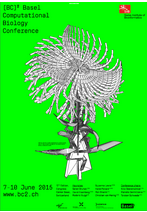T1: Why, What, How: practical introduction to SPARQL for biologists and informaticians
Using the real world UniProt and neXtProt databases as illustrative examples
Organizers:
Jerven Bolleman (Swiss Institute of Bioinformatics, University of Geneva), Pierre André Michel (Swiss Institute of Bioinformatics, University of Geneva) and Daniel Dinis Teixeira (Swiss Institute of Bioinformatics, University of Geneva)
Tutorial website
Tutorial Summary:
Motivation. More and more bioinformatics databases are deploying SPARQL endpoints allowing detail access to the information and data contained in them. This introduces how biologists and informaticians can use SPARQL to make it easier to integrate data and execute experiments with information provided by public resources combined with their own private experimental data to gain insight and gather supporting evidence. We will show how bioinformatics can stop parsing file formats and start answering scientific questions.
We will show you what SPARQL is:
- A standardized graph query language
Who uses it:
- Multiple SIB databases such as neXtProt and UniProt, as well as the EBI, GO (Gene Ontology Consortium) and NCBI
How you can use it:
- to investigate public and private data for new insights, using tools you already know such as R and the command line as well as web browsers.
When should you use it:
- When is SPARQL a good technical and scientific solution and when is it not?
Expected goals:
- Gain basic knowledge about SPARQL and its practical applications.
- Get an introduction to the neXtProt and UniProt databases and how you can use SPARQL to get answers to complicated questions.
- Show the tools and help we provide (example queries, data model browser)
- Demonstrate that SPARQL is not complicated and can be integrated in existing workflows e.g. R, command line, Excel, REST APIs.
- To learn how federated queries can be used to combine data in multiple databases so as to answer hard scientific questions.
- Explain how neXtProt and UniProtKB are complementary and how both add extra scientific value when combined.
Level: Introduction/beginner (whetting the appetite to learn more and start using it)
Tutorial speakers:
- Jerven Bolleman, Pierre André Michel and Daniel Dinis Teixeira
Tutorial Agenda
- Please check the tutorial website






